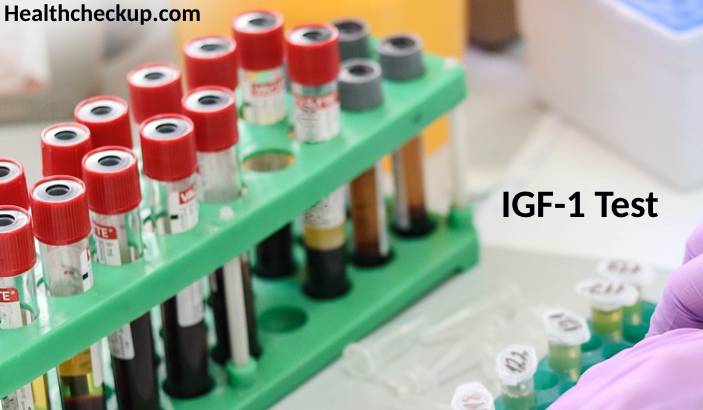Insulin-like Growth Factor 1 (IGF-1) is a hormone similar in molecular structure to insulin. It plays an important role in childhood growth and continues to have anabolic effects in adults. IGF-1 is primarily produced in the liver, and its production is stimulated by growth hormone (GH) secreted by the pituitary gland. The IGF-1 test is instrumental in assessing the functioning of the pituitary gland, diagnosing growth hormone deficiencies or excesses, and more.
Purpose of the IGF-1 Test
- Diagnosing Growth Hormone Abnormalities: IGF-1 levels are measured to help diagnose deficiencies or excesses of growth hormone. High levels may indicate gigantism or acromegaly, while low levels could suggest growth hormone deficiency.
- Monitoring Growth Hormone Treatment: For patients receiving growth hormone therapy, IGF-1 testing is crucial to monitor the effectiveness and adjust dosages.
- Evaluating Pituitary Function: Since IGF-1 levels are less variable than growth hormone levels, they are a more reliable indicator of average growth hormone secretion.
- Investigating Developmental Issues in Children: It helps in assessing children with growth delays or unusually tall stature.
Preparation for the Test
- Fasting: Patients may be required to fast for 8-10 hours before the test to ensure accurate results.
- Medication Disclosure: It’s important to inform your healthcare provider about all medications, both prescription and over-the-counter, as some can affect IGF-1 levels.
- No Strenuous Exercise: Avoiding strenuous exercise before the test is recommended because physical activity can temporarily raise IGF-1 levels.
Procedure of the IGF-1 Test
- Blood Sample Collection: The test is performed by drawing a blood sample from a vein, typically in the arm. This is similar to most other blood tests.
- Handling and Processing: The blood sample is then processed in a laboratory where IGF-1 levels are measured using specialized assays.
- Duration: The actual blood draw takes only a few minutes, although waiting times at the clinic may vary.
Normal Range
- Age and Sex-specific Ranges: The normal range for IGF-1 varies widely depending on age, sex, and the specific laboratory standards, as IGF-1 levels change significantly with age.
- Typical Reference Ranges: These ranges are typically provided by the lab performing the test and are used to compare individual results to determine if they are within normal limits.
Results Interpretation
- High IGF-1 Levels: Elevated levels can indicate an overproduction of growth hormone, possibly from a pituitary tumor (usually benign). Conditions such as acromegaly may be diagnosed when high IGF-1 levels are accompanied by characteristic symptoms.
- Low IGF-1 Levels: Lower levels can indicate a deficiency in growth hormone, which can lead to growth issues in children and decreased bone density and muscle weakness in adults.
- Further Testing: Abnormal results often lead to additional tests, including direct growth hormone measurements, pituitary imaging, and other endocrine system evaluations.
The IGF-1 test is used in endocrinology, providing essential information about growth hormone activity that is crucial for diagnosing and managing various medical conditions. By understanding what to expect from the test, how to prepare for it, and how to interpret the results, patients and healthcare providers can effectively use this test to monitor and address potential health issues related to growth hormone irregularities.
I specialize in writing about health, medical conditions, and healthcare, drawing extensively from scientific research. Over the course of my career, I have published widely on topics related to health, medicine, and education. My work has appeared in leading blogs and editorial columns.









